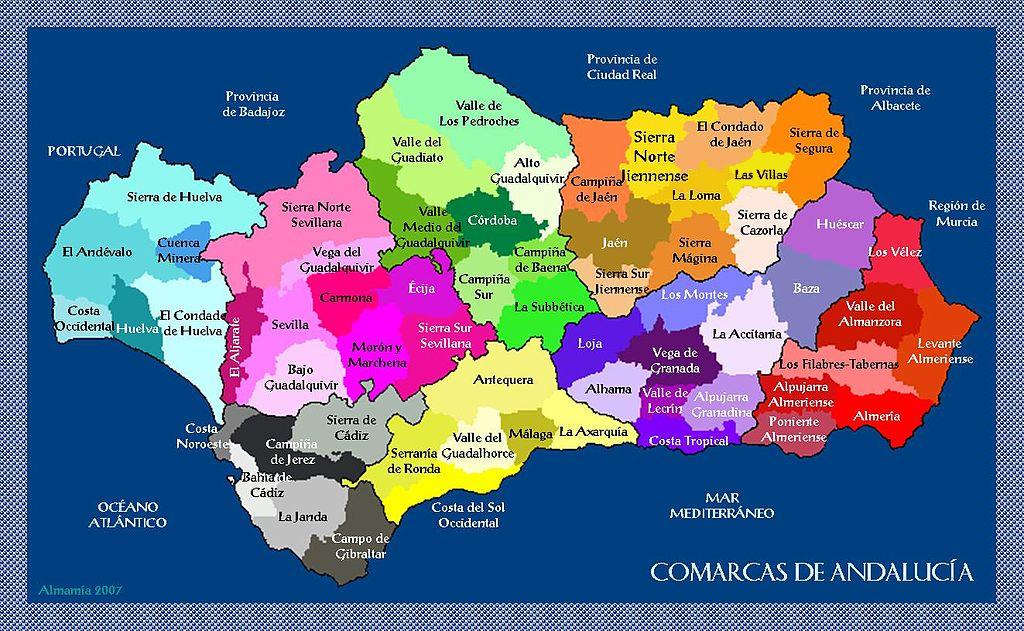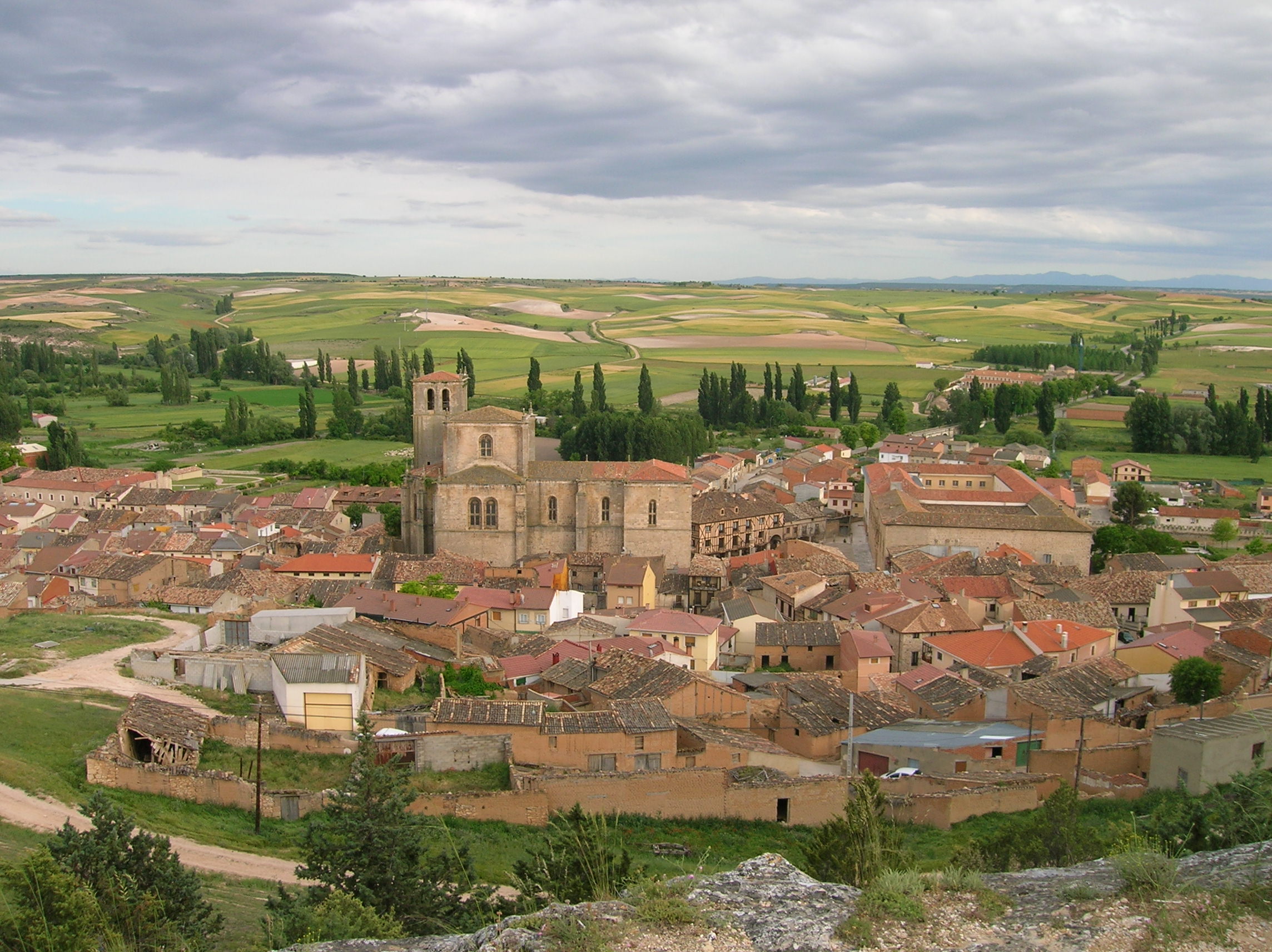|
Archidona
Archidona is a town and municipality in the province of Málaga, part of the autonomous community of Andalusia in southern Spain. It is the center of the comarca of Nororiental de Málaga and the head of the judicial district that bears its name. It earned the title of city in 1901. It covers an area of 187 km2 extending from the east side of the Hoya of Antequera. The city is located at a height of 666 meters in the foothills of the Sierra de Gracia. With 8,858 inhabitants, Archidona is the most populous municipality in the comarca. The population is concentrated in the main urban centers of the same name and in Salinas, Estación de Archidona and Huertas del Río. The municipality is situated approximately 50 kilometers from the city of Málaga and 20 km from Antequera. Archaeological finds confirm the presence of settlers in the area from the Lower Paleolithic. The oldest permanent settlement correspond to Escua, founded by the Phoenicians, and Ulisis, inhabited by ... [...More Info...] [...Related Items...] OR: [Wikipedia] [Google] [Baidu] |
Antequera
Antequera () is a city and municipality in the Comarca de Antequera, province of Málaga, part of the Spanish autonomous community of Andalusia. It is known as "the heart of Andalusia" (''el corazón de Andalucía'') because of its central location among Málaga, Granada, Córdoba, and Seville. The Antequera Dolmens Site is a UNESCO World Heritage site. In 2011, Antequera had a population of 41,854. It covers an area of 749.34 km2 with a population density of 55.85 inhabitants/km2, and is situated at an altitude of 575 meters. Antequera is the most populous city in the interior of the province and the largest in area. It is the twenty-second largest in Spain. The city is located 45 km from Málaga and 115 km from Córdoba. The cities are connected by a high-speed train and the A-45 motorway. Antequera is 160 km from Seville and 102 km from Granada, which is connected by motorway A-92 and will be connected by the high-speed Transverse Axis Rail in th ... [...More Info...] [...Related Items...] OR: [Wikipedia] [Google] [Baidu] |
Hoya Of Antequera
The Hoya of Antequera (also Antequera Depression or, in Spanish, ''Depresión de Antequera'', ''Hoya de Antequera'' or ''Vega de Antequera'') is a sedimentary basin located in the northern part of the province of Málaga, Andalusia, Spain. It takes its name from the city of Antequera, located within the depression. It is located in the Baetic Cordillera, with the Cordilleras Subbéticas to its north and the Cordillera Penibética to its south. It is one of the series of valleys forming the Surco Intrabético. In the east a narrow pass connects it to the Depression of Granada. In the west, the Serranía de Ronda separates it from the Depression of Ronda. The term ''hoya'' literally means "trough" and refers to the boxed in character of the area. The plain composes most of the Comarca de Antequera. Running through the Hoya of Antequera is the upper portion of the Guadalhorce, which flows into the Mediterranean Sea near the city of Málaga. The plain consists of rolling fields d ... [...More Info...] [...Related Items...] OR: [Wikipedia] [Google] [Baidu] |
Al-Andalus
Al-Andalus translit. ; an, al-Andalus; ast, al-Ándalus; eu, al-Andalus; ber, ⴰⵏⴷⴰⵍⵓⵙ, label= Berber, translit=Andalus; ca, al-Àndalus; gl, al-Andalus; oc, Al Andalús; pt, al-Ândalus; es, al-Ándalus () was the Muslim-ruled area of the Iberian Peninsula. The term is used by modern historians for the former Islamic states in modern Spain and Portugal. At its greatest geographical extent, it occupied most of the peninsula and a part of present-day southern France, Septimania (8th century). For nearly a hundred years, from the 9th century to the 10th, al-Andalus extended its presence from Fraxinetum into the Alps with a series of organized raids and chronic banditry. The name describes the different Arab and Muslim states that controlled these territories at various times between 711 and 1492. These boundaries changed constantly as the Christian Reconquista progressed,"Para los autores árabes medievales, el término Al-Andalus designa la totalida ... [...More Info...] [...Related Items...] OR: [Wikipedia] [Google] [Baidu] |
Comarcas Of Andalusia
In Andalusia, comarcas have no defined administrative powers; many municipalities have gathered together to form ''mancomunidades'' in order to provide basic services, but those do not always coincide with the traditional ''comarcas''. The current (2007) Statute of Autonomy of Andalusia, unlike its 1981 predecessor, allows for the establishment and regulation of official ''comarcas'' under its Title III, Article 97, which defines the significance of ''comarcas'' and sets the basis for future legislation in this area. In 2003, the Council of Tourism and Sports of the Regional Government of Andalusia The Regional Government of Andalusia ( es, Junta de Andalucía) is the government of the Autonomous Community of Andalusia. It consists of the Parliament, the President of the Regional Government and the Government Council. The 2011 budget was 31 ... published an order in which it defined the ''comarca'' as "a geographic space with some homogeneous natural characteristicas, which pro ... [...More Info...] [...Related Items...] OR: [Wikipedia] [Google] [Baidu] |
Al-Andalus
Al-Andalus translit. ; an, al-Andalus; ast, al-Ándalus; eu, al-Andalus; ber, ⴰⵏⴷⴰⵍⵓⵙ, label= Berber, translit=Andalus; ca, al-Àndalus; gl, al-Andalus; oc, Al Andalús; pt, al-Ândalus; es, al-Ándalus () was the Muslim-ruled area of the Iberian Peninsula. The term is used by modern historians for the former Islamic states in modern Spain and Portugal. At its greatest geographical extent, it occupied most of the peninsula and a part of present-day southern France, Septimania (8th century). For nearly a hundred years, from the 9th century to the 10th, al-Andalus extended its presence from Fraxinetum into the Alps with a series of organized raids and chronic banditry. The name describes the different Arab and Muslim states that controlled these territories at various times between 711 and 1492. These boundaries changed constantly as the Christian Reconquista progressed,"Para los autores árabes medievales, el término Al-Andalus designa la totalida ... [...More Info...] [...Related Items...] OR: [Wikipedia] [Google] [Baidu] |
Conjunto Histórico
In Spain, the legal designation ''Conjunto histórico'' (formerly ''Conjunto Histórico-Artístico'' or "Historic-Artistic Grouping") is part of the national system of heritage listing. It is applied to buildings in a given locality. It is typically used to protect complete villages, such as Peñaranda de Duero, or historic quarters of towns such as Avilés. ''Conjunto'' means "group", and as a group listing, the ''Conjunto histórico'' is comparable with the British concept of a Conservation Area. ''Conjunto histórico'' is a sub-category within a broader category of ''Bien de Interés Cultural'', which protects Spain's cultural heritage and is regulated by the country's Ministry of Culture. As well as ''conjuntos históricos'', the category of ''Bien de Interés Cultural'' includes the following sub-categories of non-movable heritage: * '' Jardín histórico'', historic garden (for example the gardens of Aranjuez) * '' Monumento'' * ''Sitio histórico'' (for example the Bulls ... [...More Info...] [...Related Items...] OR: [Wikipedia] [Google] [Baidu] |
House Of Osuna
Duke of Osuna is a Spanish noble title that was first awarded in 1562 by King Philip II of Spain to Pedro Girón de la Cueva, ( Osuna, Seville, 29 July 1537 – 1590). Pedro was also Viceroy of Naples, (1582–1586), Ambassador in Portugal and 5th Count of Ureña. The fortunes of the town of Osuna started to rise in the mid-15th century. At that time, Osuna was ruled by Pedro Girón Acuña Pacheco, the younger brother of Juan Pacheco. His son Alfonso Téllez-Girón de las Casas was elevated to Count of Ureña in 1464 by King Enrique IV of Castile. The dynasty's influence increased, obtaining the title of Duke of Osuna in 1562. Osuna became the Andalusian capital of the domains of the Téllez-Girón family, who carried the ducal title. Some of the most notable members of the House of Osuna were Pedro Téllez-Girón, 3rd Duke of Osuna, who was a general and viceroy of Naples. He became known to history as the "Great Duke of Osuna". Another celebrated member was Pedro Téll ... [...More Info...] [...Related Items...] OR: [Wikipedia] [Google] [Baidu] |
Emir
Emir (; ar, أمير ' ), sometimes transliterated amir, amier, or ameer, is a word of Arabic origin that can refer to a male monarch, aristocrat, holder of high-ranking military or political office, or other person possessing actual or ceremonial authority. The title has a long history of use in the Arab World, East Africa, West Africa, Central Asia, and the Indian subcontinent. In the modern era, when used as a formal monarchical title, it is roughly synonymous with "prince", applicable both to a son of a hereditary monarch, and to a reigning monarch of a sovereign principality, namely an emirate. The feminine form is emira ( '), a cognate for " princess". Prior to its use as a monarchical title, the term "emir" was historically used to denote a "commander", "general", or "leader" (for example, Amir al-Mu'min). In contemporary usage, "emir" is also sometimes used as either an honorary or formal title for the head of an Islamic, or Arab (regardless of religion) organi ... [...More Info...] [...Related Items...] OR: [Wikipedia] [Google] [Baidu] |
Alcazaba
A kasbah (, also ; ar, قَـصَـبَـة, qaṣaba, lit=fortress, , Maghrebi Arabic: ), also spelled qasba, qasaba, or casbah, is a fortress, most commonly the citadel or fortified quarter of a city. It is also equivalent to the term ''alcazaba'' in Spanish (), which derives from the same Arabic word. By extension, the term can also refer to a medina quarter, particularly in Algeria. In various languages, the Arabic word, or local words borrowed from the Arabic word, can also refer to a settlement, a fort, a watchtower, or a blockhouse. Citadel or fortress The term ''qasaba'' was historically flexible but it essentially denotes a fortress, commonly a citadel that protects a city or settlement area, or that serves as the administrative center. A kasbah citadel typically housed the military garrison and other privileged buildings such as a palace, along with other amenities such as a mosque and a hammam (bathhouse). Some kasbahs are built in a strategic elevated position ... [...More Info...] [...Related Items...] OR: [Wikipedia] [Google] [Baidu] |
Rayya Cora
Rayya may refer to: *Rayya. a character in the tale "Otbah and Rayya" in '' One Thousand and One Nights'' *Rayya Mandi (Punjab) Rayya may refer to: *Rayya. a character in the tale "Otbah and Rayya" in ''One Thousand and One Nights ''One Thousand and One Nights'' ( ar, أَلْفُ لَيْلَةٍ وَلَيْلَةٌ, italic=yes, ) is a collection of Middle Eastern fo ..., a town and nagar panchayat in Amritsar district * Rayya (crater), named after the character from One Thousand and One Nights {{dab ... [...More Info...] [...Related Items...] OR: [Wikipedia] [Google] [Baidu] |
Turduli
The Turduli (Greek ''Tourduloi'') or Turtuli were an ancient pre-Roman people of the southwestern Iberian Peninsula. Location The Turduli tribes lived mainly in the south and centre of modern Portugal – in the east of the provinces of Beira Litoral, coastal Estremadura and Alentejo along the Guadiana valley, and in Extremadura and Andalusia in Spain. Their capital was the old oppidum of ''Ibolca'' (sometimes transliterated as ''Ipolka''), known as Obulco in Roman times, and which currently corresponds to the city of Porcuna, currently located between the provinces of Córdoba and Jaén. Apart from ''Ibolca'', the pre-Roman towns most strongly associated with the Turdulli include ''Budua'' (Badajoz), ''Dipo'' ( Guadajira), ''Mirobriga'' ( Capilla), and ''Sisapo'' (Almadén). Origins While they are sometimes described, in the available ancient sources, as being related ethnically to the neighboring Turdetani of Baetica (modern Andalusia), the exact ethnic origins remain obscu ... [...More Info...] [...Related Items...] OR: [Wikipedia] [Google] [Baidu] |


.jpg)
